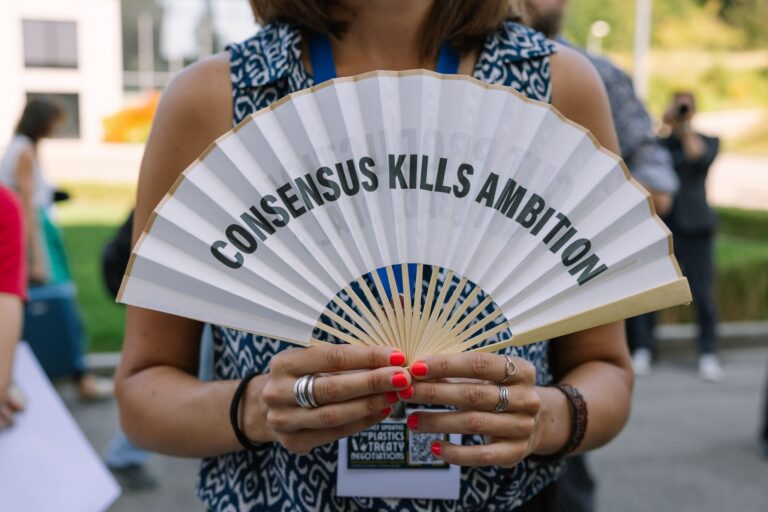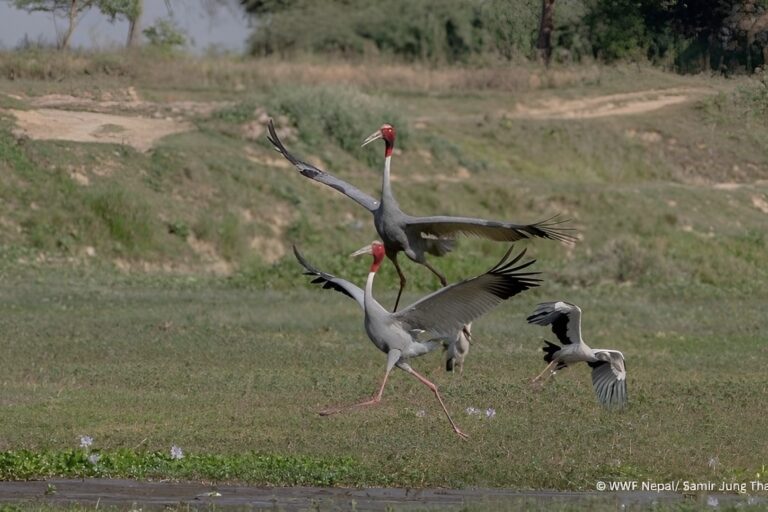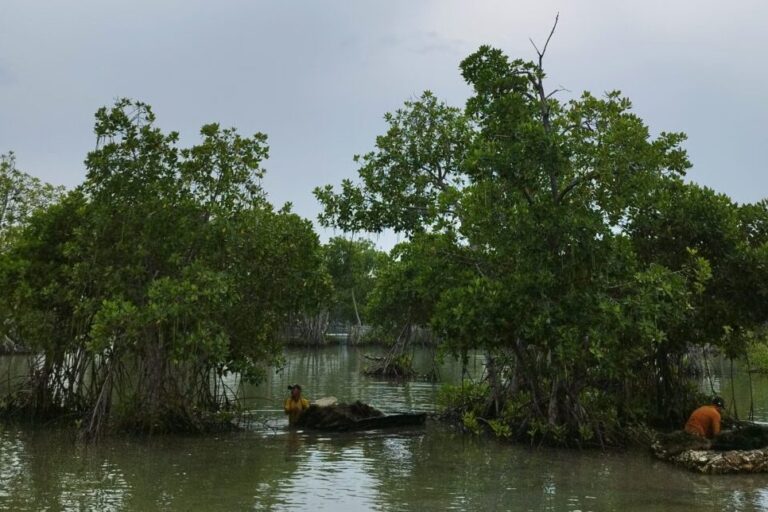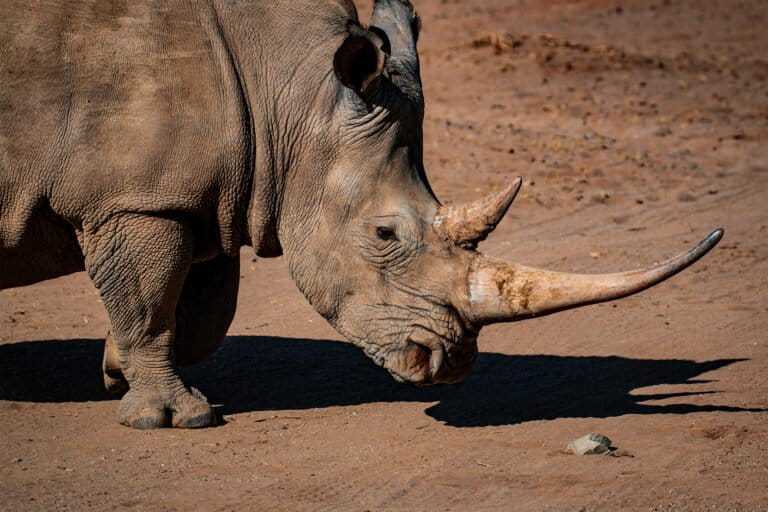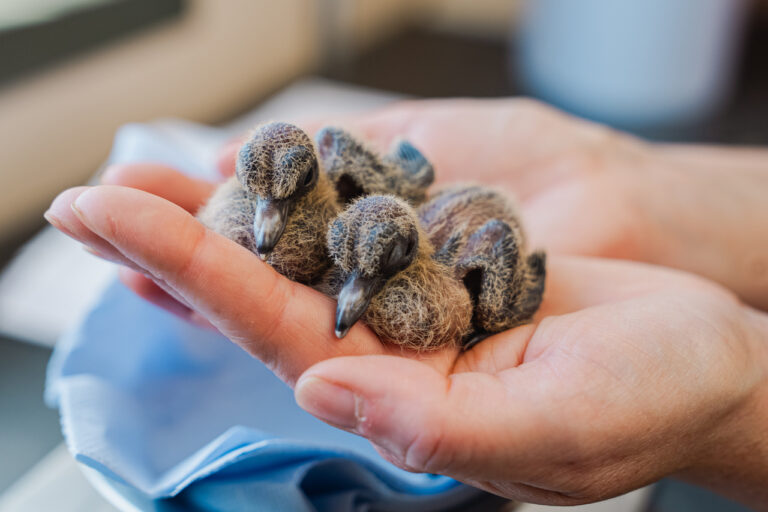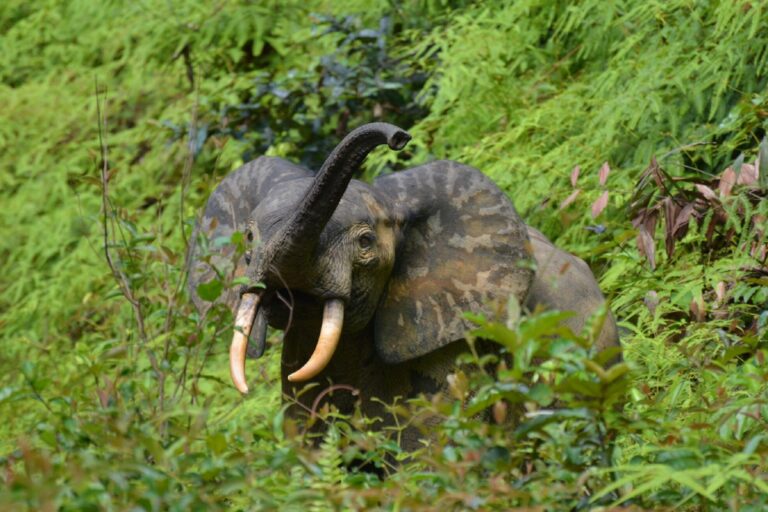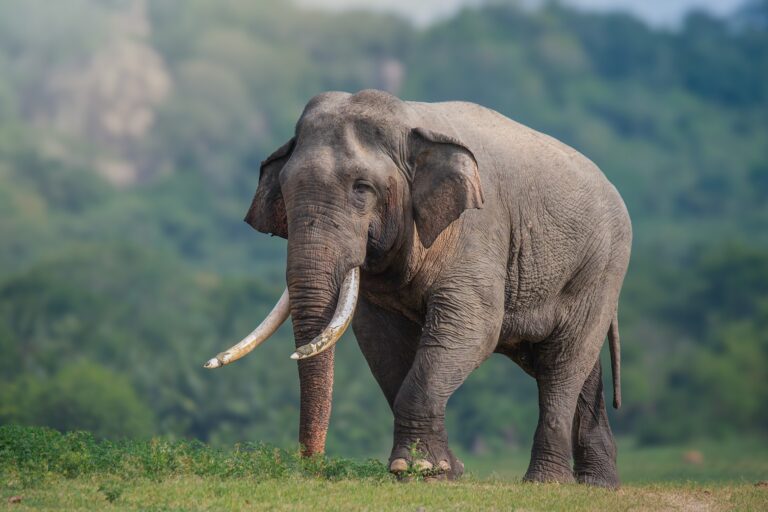- As infrastructure projects and soy plantations pump up land values in the Brazilian Amazon, smallholders are selling up and moving to more distant frontiers, perpetuating a cycle of displacement and deforestation.
- The isolated south of Roraima state has become a priority destination for these migrants, who buy land from informal brokers with questionable paperwork; much of the land has been grabbed from the vast undesignated lands of the Brazilian government.
- Although the appetite for land grabs has diminished since the start of the Lula administration, the region has seen an increase in deforestation in recent years.
CAROEBE, Brazil — Onésio Nascimento has worked the land his whole life, moving from one Brazilian farming frontier to the next.
During the coronavirus pandemic, he sold 20 hectares (50 acres) of land in northwest Mato Grosso state and used the money to buy 100 hectares (250 acres), more than 1,500 kilometers (900 miles) deeper north into the Amazon, in south Roraima state.
Today, he grows cassava and bananas on his land, an hour’s drive down a bumpy dirt road, flanked by small herds of cattle, which turns to mud during the rainy season and that loggers use to extract valuable Amazon hardwoods from nearby pristine forest.
On a late October afternoon, during the severe 2023 Amazon drought, his patch of land sat burning; he’d set it on fire deliberately so he could clear space to plant more crops.
“There was nothing when I arrived, it was all forest,” he told Mongabay. “We had to work a lot.”
Even in this far-flung part of the Amazon, 59-year-old Nascimento isn’t alone as an “outsider.” Almost all of his neighbors on dirt road 34, in the banana and timber town of Caroebe, migrated from other Amazon states such as Mato Grosso, Rondônia and Pará, attracted by cheap land.

In recent years, infrastructure megaprojects, large-scale cattle farming operations and soy plantations have driven up land prices in settled regions of the Brazilian Amazon, many of which were colonized during the country’s military dictatorship from 1964 to 1985.
The spike in land prices combined with typical difficulties faced by family farmers in the region, such as access to credit, have encouraged many to sell up and search for opportunities of ever-distant frontiers, perpetuating a cycle of displacement and deforestation.
Southern Roraima’s vast extensions of “vacant lands,” which aren’t conservation areas or privately owned, has sparked interest in recent years from a range of groups, including small farmers, squatters, speculators, land grabbers and large cattle ranchers.
“It is one of the last frontiers of the Brazilian Amazon,” Paulo Barni, a professor of forestry management at the State University of Roraima, told Mongabay. “And the vacant lands are sitting there, available for people to demarcate and then take possession.”
While attention has been focused on the billion-dollar illegal gold and tin mining industry operating in Roraima’s Yanomami Indigenous Territory, Amazon deforestation in the state’s southern municipalities have exploded in recent years.
According to data from Brazil’s space agency, INPE, total deforestation in the four municipalities that make up southern Roraima — Caroebe, Rorainópolis, São João da Baliza and São Luiz — more than doubled in the 2019-2021 period from the previous three-year period — to 27,800 hectares from 12,700 hectares (68,700 acres from 31,400 acres) .
The destruction continued to increase in 2022 and 2023, with 19,100 hectares (47,200 acres) cleared during that period. Within the first few weeks of 2024, preliminary data suggest at least 800 hectares (2,000 acres) have been cleared, half of this in Caroebe, where Nascimento lives.
In February, the municipality was the eighth-worst hit for forest fires in Brazil as Roraima saw an unprecedented burning season.
Smallholders like Nascimento cause relatively small amounts of deforestation, according to Barni, due to the high costs of cutting down trees and clearing the land — roughly 2,000 reais ($400) a hectare, or about $160 an acre. However, they potentially open the way for large-scale land grabbers and speculators, while large clearings of up to 400 hectares (nearly 1,000 acres) at a time are also common in the region.

Surrounded by dirty roads
Indigenous lands in the south of the state have also suffered from an increase in invasions by loggers and land grabbers.
“We are surrounded on all sides by dirt roads,” said Levi da Silva Kaykûwû, chief of the Wai Wai Indigenous people, whose 406,000-hectare (1-million-acre) territory is often targeted by loggers. “These days they are getting ever closer.”
Nascimento heard about the opportunity to buy land in southern Roraima from an informal land broker, a type of traveling salesperson common in the Brazilian Amazon, who profits from transactions between landowners and buyers.
Born in Paraná state in Brazil’s south in the late 1970s, Nascimento and his family were among millions of poor farmers who flocked north to the Amazon, squeezed out by mechanized agriculture and monoculture crops. The first place they settled was Vilhena in the state of Rondônia.
“I’m more from Rondônia than from Paraná,” Nascimento said.
The family grew coffee, rice, beans and corn on a small patch of land, but suffered great hardship, he said. Many smallholders who migrated to the Amazon during the colonization period fell ill and died from malaria; others sold up or abandoned their properties, or else were swindled by land grabbers.
By the time he was a young man, in the late 1980s, growing crops and working at a logging firm, and using the money he earned to open up more land, large-scale cattle ranchers were moving into Rondônia, putting the Amazon crisis firmly in the international spotlight. Nascimento eventually moved to Mato Grosso state, just east of Rondônia and still in the Amazon.
Then, a generation later, history repeated itself. In 2020, he decided to sell his small farm in Aripuanã, a logging and cattle-rearing town with one of the highest deforestation rates in the Amazon, where he had spent the past 18 years.
By then, Mato Grosso already was Brazil’s agricultural powerhouse, and local land prices had risen after the establishment of a zinc mine. For smallholders like Nascimento, working conditions had become more difficult as wealthy farmers with their mechanized equipment moved in, far outcompeting them on crop yields.

Then there was the violence: a quadruple execution by hooded gunmen at an illegal mining site in 2020 added to the death toll that made Aripuanã among the most murderous municipalities in Brazil that year.
Today, Nascimento lives next door to his ex-wife and her new husband, who also bought property on dirt road 34 in southern Roraima. His children live in Mato Grosso and Rondônia.
He complained that environmental officials began “persecuting” him and his neighbors after Luiz Inácio Lula da Silva, who ran for president on a pro-environment platform, took office in January 2023. Roraima was a stronghold for the defeated incumbent, Jair Bolsonaro, accounting for his biggest margin over Lula in the 2022 elections.
“They only go after the little guys,” said Nascimento, who is illiterate. “With Bolsonaro, at least we could work.”
An environmental official based in Roraima, who asked not to be identified for fear of local persecution, told Mongabay that the state’s leniency of allowing settlers to stake land claims was “practically state policy,” and was especially encouraged during the Bolsonaro years, from 2019-2022.
Nascimento doesn’t have a real land title, just an informal sales document. This fragile paperwork doesn’t allow him access to bank credit, and it could cost him his land. He said he hopes to join the increasing number of people to obtain a land title from the state at some point. But, as he pointed out, “To legalize, you have to have a lot of money, it’s difficult.”

‘The dream is to buy a piece of land’
An hour’s drive deeper down dirt road 34, where Nascimento lives, which is being opened little by little, most likely by loggers according to local sources, recently cleared land abuts the native forest.
Celia Regina da Silva, 53, arrived recently from Rondônia, where she quit her job as a sales supervisor at a telephone company.
Both her husband and her son were hired by the owner of a patch of land, an area of 300 hectares (741 acres) of native forest, to inventory which trees are valuable and will be removed and sold later to sawmills in the region.
“I’ve only been here a short time, but now the dream is to buy a piece of land and move in here,” da Silva said.
Deeper down dirt road 34, recently constructed wood huts sit on cleared land, empty except for some basic furniture and sawdust, suggesting logging activity; roads used to remove hardwoods already snake through the forest.
The dirt road ends close to the Trombetas/Mapuera Indigenous Territory, a massive expanse of forest that has been invaded by loggers and land grabbers. Federal prosecutors in Roraima recently recommended canceling land titles for squatters and farmers in the territory; a mysterious plane was also found here last year.
Southern Roraima has long been a hotspot for the illegal logging trade. In 2020, an illegal logger was killed during an enforcement operation in the municipality of Rorainópolis.
The region was also where the National Force, a joint military and civil police unit, was deployed last year to protect the Pirititi Indigenous Territory, home to an isolated Indigenous group, after it was invaded by land grabbers in May. In December, the National Force’s presence was extended for another 90 days.
“There is an extremely well-organized group working there,” said Alisson Marugal, a federal prosecutor in Roraima.
At Caroebe’s Banana Festival and Agribusiness Fair, a joint event held at the end of October a short drive from the entrance of the dirt road where Onésio Nascimento and Celia Regina da Silva live, the cowboy-style rural culture that has spread throughout the Brazilian Amazon in recent decades was on full display.
There, top artists like Joelma, the “Queen of Calypso,” as well as country singers Mano Walter and George Japa, performed on a stage. Stands advertised John Deere agricultural machines, some of which sell for tens or even hundreds of thousands of dollars, while a rodeo provided more entertainment for spectators.
Caroebe City Hall wrote in an Instagram post that the event attracted “more than forty thousand people” and “saw a record of transactions for the agribusiness sector of the region.”
Such is the land boom in Roraima these days that social media is also used by dedicated brokers to advertise large properties.
Still, Evanilson Ribeiro da Silva, an informal broker who uses Facebook for intermediate property sales, said the migration rush he’d witnessed over the past six years in the region stalled in 2023.

Fears about the Lula administration’s crackdown on environmental violations has discouraged new settlers and large cattle ranchers from buying land that year, he said.
“Most people who come to the south of the state are cattle ranchers,” he said. “I drive all over here, most of them [land buyers] are from Rondônia.”
“But the people are desperate because they have a problem with the Workers’ Party [Lula’s party] government, because they are very strict with inspections.”
Daniel Alves da Silva, 59, said he feels the same. A veteran Amazonian journeyman from São Paulo, he said he’s bought and sold 13 properties in 26 years in Rondônia and the south of Roraima, where he’s lived for the past 11 years.
He complained about measures by the Lula administration, such as the crackdown on illegal mining in the Yanomami Indigenous Territory, and a presidential veto of a bill undermining Indigenous land rights (which was overturned by Congress, leaving the Supreme Federal Court to weigh in on the issue once again.)
“Anyone who wants to sell land isn’t selling because people are afraid of this change of government,” da Silva said, adding he was returning to Rondônia to take up sawmill work.
But that’s not an option for Johnny Sampaio, 61, also born in Rondônia, who lives in a wooden shack on the same sprawling dirt road 34 as Onésio Nascimento and Celia Regina da Silva.

When there’s work, he earns 100 reais ($20) a day cutting down the brushwood on land that’s been deforested and burned to make way for plantations or cattle pastures.
In his one-room house, flies and food in less than hygienic conditions sit next to a dirty mattress that he uses to rest from work days, often in 40° Celsius (104 Fahrenheit) heat.
“I live alone with God,” Sampaio said.
With the possible paving of the BR-319 highway, which would connect the Rondônia capital of Porto Velho with the city of Manaus, in Amazonas state, Roraima would be less isolated from the rest of Brazil. Experts say this would raise land prices — and also the rate of deforestation.
“It would be catastrophic for the region,” said Barni, the forestry professor. “One of the reasons that keeps the forests maintained is the state’s relative isolation.”
But for Onésio Nascimento on dirt road 34, the hardships of living so isolated are very real. The drought has affected his rain-dependent banana crops. Still, after a lifetime of moving around, he said he hopes to settle in southern Roraima.
“It’s more peaceful here,” he said. “God willing, I’ll bring my kids.”
CORRECTION (2/4/2022): A previous version of this article failed to identify Levi da Silva Kaykûwû as chief of the Wai Wai Indigenous people. The post has now been corrected.
This project was partially funded by the Pulitzer Center’s Rainforest Journalism Fund.
With half its surface water area lost, an Amazonian state runs dry
FEEDBACK: Use this form to send a message to the author of this post. If you want to post a public comment, you can do that at the bottom of the page.






